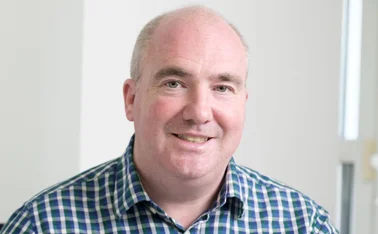
Choosing an insurer: Avoiding the money trap

The rush to the bottom over price by customers can only hurt the industry, but brokers are well placed to stop the rot by offering their clients advice on the difference that choosing the right insurer can make.
An obsession with price is not healthy for the insurance industry and its customers, and the battle to be the cheapest will lead inevitably to disappointment for all.
But, in spite of the tough economic climate, brokers continue to demonstrate that insurance is about more than simply getting a good deal.
It is a prudent approach. While a low price may be attractive to clients watching the bottom line, it can prove to be a false economy.
"You can always have cheap, but you have to be prepared for what it means if you do need to make a claim," says Brokerbility chairman Ashwin Mistry. "The best clients are those who've had a claim, left on price, and then come back."
As an example of the consequences a price-fixated client may face, take an organisation that has suffered a major loss. If the insurer fails to act swiftly, the firm may struggle to ever get back up and running.
Even without a claim, a company could put itself in financial trouble, being hit with a fine if it fails to meet new health and safety requirements because it put its faith in an insurer that did not view risk management services as part of its remit.
Because of this, price is just one of many factors that need to be taken into account.
Jonathan Prinn, chief operating officer of the placement division at Willis, explains: "Insurance isn't a commodity; it's not like a barrel of oil, which has a set price.
"You have to take into account other considerations such as service, underwriting and claims handling. Working out how these fit a client's requirements is an art form."
The choice of insurer can help a broker move away from a price-focused discussion with its clients. Mark Crawford, broking director for the Midlands and south west at Aon, says that clients are becoming much more discerning.
"An insurer's financial profile is more important, especially in light of the Eurozone crisis. Companies also want to know that they have policy certainty, and we have worked hard with insurers to get agreed wordings and remove ambiguities," he adds.
Features of the relationship
As well as having the ability to pay claims, brokers look for other features that make the relationship between the insurer and the client less about price.
Sean Finnegan, regional managing director at Giles Insurance Brokers, believes that an insurer's expertise and appetite for a particular market can make a difference.
For instance, for a client in the food sector he would look to see whether any insurers specialise in this area.
"The insurer's expertise and cover offerings become relevant to the client. The market we are using includes cover enhancements to attract customers, for example product recall or contamination cover," he says.
"They offer a free thermal imaging service that will identify any hotspots in the electrical systems that could affect production. This can be very meaningful to a client."
Whether or not a broker can match a client to an insurer that specialises in their sector, the range of additional services can become particularly important when selecting a provider.
Insurers and brokers are increasingly promoting services to support clients in areas such as risk management, major loss claims handling and health and safety. And many believe these additional services can make a significant difference in the event of a claim.
As an example, Paul Williams, UK broking director at Towergate Partnership, points to the Camden fire of 2008, which affected a large number of its clients.
"This was one of our biggest losses and the way claims were managed was critical," he says. "We had to ensure that businesses were able to get back into a position where they could trade again as quickly as possible."
The number of businesses affected meant that, as well as arranging for repairs to be carried out as quickly as possible, it was important that this was done efficiently.
Attention also had to be given to businesses' cash flow to ensure that, once the properties were repaired, they were able to resume operations again.
"We wouldn't recommend cover if our experience of the insurer in a major loss was poor," Williams adds. "It's a critical part of insurance."
While a claim can transform a client's view of the importance of insurance, even those lucky enough not to call on their cover can benefit from the added value services.
As an example, Crawford says he likes to work with clients on contingency plans, so they can see exactly what would happen in the event of a claim.
"When a client has a major loss, especially in terms of property or a fatality, there's always a hectic period as everyone comes to terms with what's happened. Planning in advance makes this as smooth and professional as possible, but also brings alive why they have insurance," he explains.
Having plans in place can make a material difference if things do go wrong. Finnegan gives the example of a large engineering client which suffered a major fire.
The fire destroyed one of the presses, which was critical to a contract supplying the automotive industry, meaning that it risked penalties if production was affected.
Because a pre-loss plan was in place, the broker's and the insurer's loss adjusters were on-site in two hours and off-site production was arranged and funded by the insurers, eliminating the risk of penalties under the contract. Interim claims payments were also arranged so the firm could get a new press.
"It was all back to normal within six months. This wouldn't have happened without the pre-loss agreement in place," he adds.
Demonstrating value
As well as promoting these added-value services, brokers can demonstrate the value they bring to a client by highlighting additional areas of cover.
Mistry points to last summer's riots, singling out one shop owner who stayed to defend their premises in spite of police warnings to leave.
Although no damage was done due to the shop owner's actions, the shop closed down anyway a few months later. Because of the riots, the area had been cordoned off by the police and, even when the riots stopped, customers were worried about returning in case of trouble.
"A broker could have helped by explaining what cover was available, for example denial of access insurance," says Mistry.
"Clients can't be expected to know about the new and emerging risks and how these can be covered. Who'd have predicted the riots or the volcanic ash cloud that hit UK airspace? It's a way for a broker to demonstrate their knowledge and the value they bring."
On top of this, with brokers increasingly offering their own additional services, attention must be paid to the overall package the client purchases.
As an example, Towergate offers a number of services including an independent loss adjuster and risk management.
"It's our responsibility to ensure the client gets good value. If we recommend a product that includes some risk management services, we won't offer our own. There's no point doubling up," says Williams.
While these extras are important and, in an ideal world, clients would plump for the right insurer and the most appropriate cover every time without taking price into consideration, everyone admits that for most clients the size of the premium always comes into play.
"Price is still desperately important," says Finnegan. "It's not an insignificant spend so the client needs to know they're getting value for money."
He adds that he would look to present a client with the top three or four prices and highlight the additional features and services that each insurer offers.
"The price has to be in the right ballpark but, for a more sophisticated buyer, we do usually find the client isn't just interested in the cheapest option," he explains.
"They will consider offers that provide features and services best suited to their particular needs, even if the premiums might be a little more."
Brokers are also developing systems to drill down into the package offered by the insurer and match it to the client.
As an example, Willis launched Will Place in January for its brokers around the world. The application enables them to generate insurer recommendations based on its objective review of the market, taking into account factors such as price, service, underwriting and claims handling, plus the client's priorities.
Prinn explains: "It blends together the art of understanding the market with the science of the underlying database and transactional information.
"By using it, a broker in New Zealand could provide recommendations of carriers, irrespective of where they are located, that offered the right coverage for the client."
Stronger working relationship
Making insurance about more than price inevitably leads to a stronger working relationship, bringing benefits for all three parties. Crawford says he encourages regular meetings between the triumvirate.
"Ten years ago the client never met the insurer, but bringing them together creates a better understanding of the risk and the services available to support the client. It also moves insurance away from being purely transactional," he explains.
Insurers can also look to the broker for assistance in tackling fraud. Being closer to the client, and often having the benefit of face-to-face meetings, means it is easier for the broker to identify and alert the insurer to potentially fraudulent applications.
With the focus more on services, there's also a shift towards longer-term relationships. Rather than switch each year, which tends to be the norm when chasing price, brokers are pushing to set up three-year deals where possible.
Finnegan says that binding each of the three parties in for this length of time is beneficial. "It gives all parties time to build a proper relationship, where the broker and insurer can really get under the skin of the client. It also gives the client budget certainty, which they like," he says.
But while it may take time to convince all clients that price isn't the only factor when purchasing insurance, there are ways to accelerate this process.
For starters, more could be done to promote the additional services so that policyholders see insurance as more than a mandatory grudge purchase. In particular, insurers could play a more proactive part in selling the added-value services.
Many of these are included for free, and there is a risk that clients regard them as low value because they don't understanding what they are.
Rehabilitation is a good example of this. Providing this service early in an injury or ill-health claim can improve an individual's chances of recovery and enable them to return to work more quickly. However, few employers would understand the benefit of this unless they needed to make a claim.
Using case studies to demonstrate the potential savings this could create for an employer would help to sell the value of this service.
How much value one of these services has also depends on the segment of the market. For example, while many large corporate clients may have their own expertise in areas such as health and safety or risk management, their smaller peers will value access to these services. This should be taken into consideration when designing marketing materials.
At the other end of the equation, pricing could also be more handled more maturely. Mistry says that even those clients who fixate on the premium don't expect costs to keep falling.
"We don't do ourselves any favours," he says. "We've seen some serious floods in the last few years and clients do expect to pay more for their insurance, but we persist in trying to get it cheaper and cheaper. This price cutting doesn't help."
Valuing the benefits that insurance can bring, whether or not someone needs to make a claim, could help to prevent the price slide and make knowledge, whether from a broker or the insurer, a much more important consideration when buying cover.
Only users who have a paid subscription or are part of a corporate subscription are able to print or copy content.
To access these options, along with all other subscription benefits, please contact info@insuranceage.co.uk or view our subscription options here: https://subscriptions.insuranceage.co.uk/subscribe
You are currently unable to print this content. Please contact info@insuranceage.co.uk to find out more.
You are currently unable to copy this content. Please contact info@insuranceage.co.uk to find out more.
Copyright Infopro Digital Limited. All rights reserved.
As outlined in our terms and conditions, https://www.infopro-digital.com/terms-and-conditions/subscriptions/ (point 2.4), printing is limited to a single copy.
If you would like to purchase additional rights please email info@insuranceage.co.uk
Copyright Infopro Digital Limited. All rights reserved.
You may share this content using our article tools. As outlined in our terms and conditions, https://www.infopro-digital.com/terms-and-conditions/subscriptions/ (clause 2.4), an Authorised User may only make one copy of the materials for their own personal use. You must also comply with the restrictions in clause 2.5.
If you would like to purchase additional rights please email info@insuranceage.co.uk







